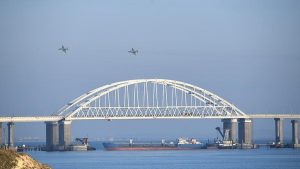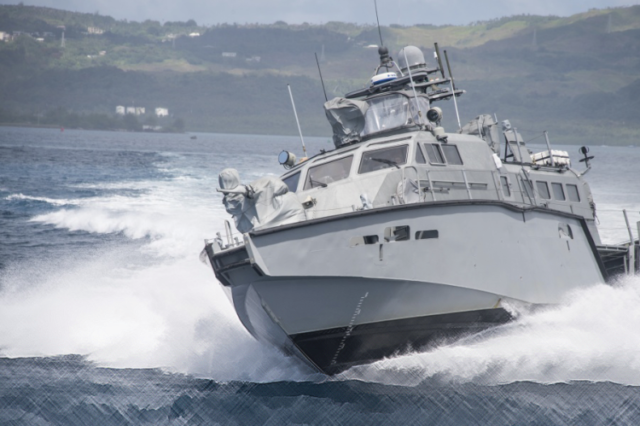Moreover, Russia has applied artificial delays to vessels traveling to/from Ukrainian seaports before providing them with permission to pass through the Kerch Strait (de facto wholly controlled by Moscow following its illegal annexation of Crimea); and those same ships are routinely subjected to unwarranted onboard inspections by Russia’s Federal Security Service (FSB) Coast Guard since spring 2018. Those delays reached 115–124.2 hours per vessel in November 2018. This Russian “boa constrictor” strategy aims at stifling Ukraine’s ports at Mariupol and Berdiansk (see EDM, June 11, 2018).
It should be noted that the March–June 2020 reduction in such artificial delays should not be taken as evidence of a change in Russia’s strategy. Rather, the drop in wait times was likely caused by the COVID-2019 pandemic in Russia`s Krasnodar Krai and occupied Crimea, where the FSB Coast Guard’s Black Sea ships and boats are based (Black Sea News, July 15).

In the six years since the Crimean annexation, Moscow has continued to rely on “Hybrid” (New Generation) Warfare as the operational center of gravity in the region has shifted from one geographic area to another (Black Sea News, July 14). According to this approach, Moscow is continuing the creeping de facto
annexation of Ukraine’s sovereign waters. At present, Ukraine no longer controls more than 70 percent of its maritime exclusive economic zone (EEZ). This equals the total territory of South Korea or Iceland (Investigator.org.ua, June 10).

After seizing Ukrainian offshore natural gas rigs, located in the Black Sea between annexed Crimea and Ukraine’s Serpent Island, Russia has militarized them and created a mobile anti-access/area-denial (A2/AD) zone around them, patrolled 24/7 by Russian missile frigates/corvettes and/or FSB boats. The minimum distance from those occupied gas rigs to the coast of Odesa Oblast is only 41.9 nautical miles (nm); to Kherson Oblast it is 28.2 nm; and to Serpent Island—27.1 nm (Black Sea News, January 13). Hence, any Russian missile ship deployed to this area could hold the sea lane approaches to Odesa continually in the crosshairs of a missile sight. Moreover, the mobile A2/AD zone around the seized gas rigs has left only a narrow maritime corridor for international shipping to/from Odesa, between Serpent Island and the Tavryda gas rig. The threat of a maritime blockade of this route by Russian naval forces is real.
A number of Ukrainian experts have associated the latest observed increases of Russian military activities in the Black Sea (as well as in Crimea and Donbas) with the ongoing water crisis in Crimea (Tyzhden.ua, June 1; Nv.ua, June 3; see EDM, May 21, June 29). This has sparked concerns that Russia may use this year’s Kavkaz 2020 large-scale military exercise as a smokescreen for renewed “hybrid” or direct attacks against Ukraine’s southern regions, including the Kahovka water reservoir, used until 2014 to supply Dnipro River water to Crimea (Ukrinform
, 24tv.ua, June 29; UATV, June 24). It should be noted that the Kremlin’s aggressive rhetoric on this issue has, indeed, been intensifying. As such, the Ochakiv sea-river node, Kherson and Mykolaiv river ports, as well as Serpent Island deserve more attention to evaluate the real threat impact. At the same time, the above-mentioned threats are dynamic and create a dangerous maritime environment not only for Ukraine but for the whole region.
In the six years since Crimea’s annexation, however, Ukraine still lacks sufficient naval forces to defend its sovereignty at sea. Kyiv urgently needs capable assets to deter Russia as well as adequately respond to the latter’s naval buildup and regional activities. This is not possible symmetrically, because of Ukraine’s unfavorable balance of sea power with Russia. The Russian Black Sea Fleet includes dozens of warships and combat boats, several submarines as well as coastal missile batteries. Those assets are equipped with up to two hundred anti-ship and cruise missiles and are capable of controlling massive areas of the sea. Ukraine possesses only a handful of warships and several combat boats, with zero anti-ship-missile potential.
This is why Ukraine needs to find asymmetric ways to respond. The “Naval Strategy of Ukraine up to 2035” clarified this notion well, advocating for the so-called “mosquito fleet,” the creation of which has been designated as a priority until 2030 (Navy.mil.gov.ua, January 11, 2019; Zn.ua, April 24, 2020).
, Mil.in.ua, June 17). The decision opened an opportunity for Ukraine to build capable asymmetric naval forces and protect its maritime sovereignty.
Mark VI boats are arguably one of the best options for Ukraine in this regard (Mil.in.ua, July 13). They are modern, small, and fast, have a low signature and good seaworthiness, as well as a high ratio between displacement and onboard weapons. Moreover, they can successfully carry out different asymmetric combat missions, such as maritime situational awareness, patrolling, strike and amphibious naval operations. For example, Russia would need only several hours to occupy Ukraine’s Zmiyinyi Island, located near the Danube River Delta. But a group of Mark VI boats with special operations team onboard could preemptively reach this island from Odesa in a couple of hours. Also important are the Mark VIs’ interoperability with North Atlantic Treaty Organization (NATO) forces, cost-effectiveness, and short manufacturing timeframe.
Yet, most advantageous is the Mark VI boats’ ability to conduct naval swarm operations. Ukraine had good experience employing such tactics in the Black Sea during World War II, when fast torpedo boats demonstrated effectiveness in strike, amphibious, mining, anti-submarine warfare (ASW), and other naval operations (Day.kyiv.ua, April 28). For such operations, Mark VI boats would need to be equipped with appropriate weapons: first of all, short-range Griffin B missiles or similar, the SYNTACS (or comparable) command-and-control system, and tactical unmanned aerial vehicles (UAV). All these weapons are, by their nature, defensive, but would arguably be effective in protecting Ukraine’s seaports, maritime choke-points, and the EEZ, as well as enable freedom of navigation missions.
Read more:
- Sanctions on Russia are working, but they're not enough
- NGOs to push for sanctions on 29 Crimea-based enterprises
- "Ukrainian fleet may be able to defend country in 2020s but can't now" (2018)
- Russia attacks Ukrainian ships near Kerch strait – video (2018)
- Russian attack on Ukrainian ships near Kerch Strait – full timeline (2018)
- Ukrainian warships break Russian de-facto blockade in Azov (2018)
- 260 foreign ships docked at occupied Crimea, violating sanctions
- Ukrainian volunteers start restoring Ukraine's broken naval fleet (2015)
- Russian invaders captured the landing ship Olshanskiy (2014)

